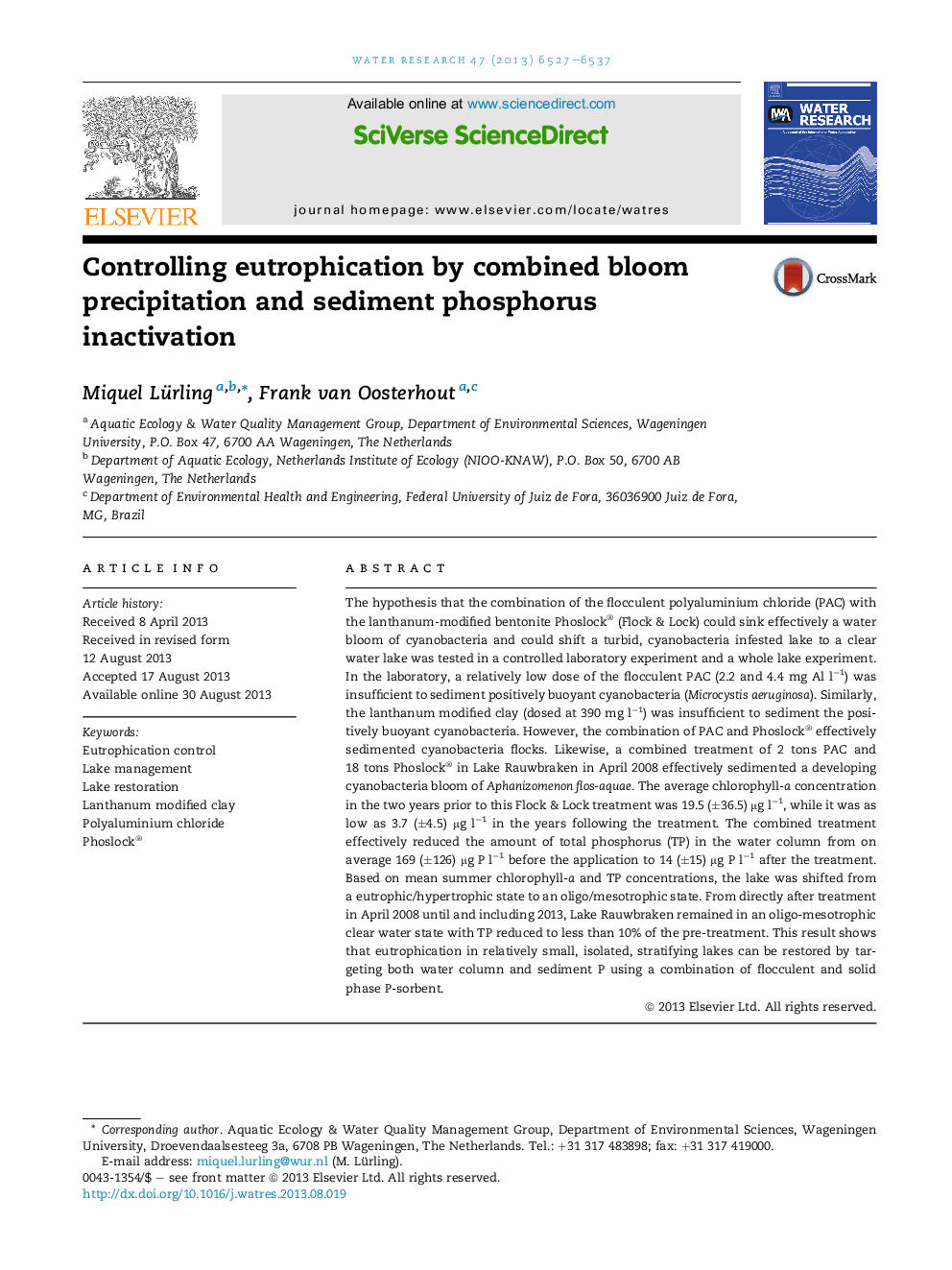| کد مقاله | کد نشریه | سال انتشار | مقاله انگلیسی | نسخه تمام متن |
|---|---|---|---|---|
| 4481904 | 1316840 | 2013 | 11 صفحه PDF | دانلود رایگان |

• The combination of PAC and Phoslock® (Flock & Lock) precipitates cyanobacteria flocks.
• Flock & Lock sedimented a developing cyanobacteria bloom in Lake Rauwbraken.
• Flock & Lock reduced TP to less than 10% of the values before Flock & Lock.
• Flock & Lock changed the lake from hypereutrophic to oligo-mesotrophic.
• Lake Rauwbraken is already more than four years in the oligo-mesotrophic state.
The hypothesis that the combination of the flocculent polyaluminium chloride (PAC) with the lanthanum-modified bentonite Phoslock® (Flock & Lock) could sink effectively a water bloom of cyanobacteria and could shift a turbid, cyanobacteria infested lake to a clear water lake was tested in a controlled laboratory experiment and a whole lake experiment. In the laboratory, a relatively low dose of the flocculent PAC (2.2 and 4.4 mg Al l−1) was insufficient to sediment positively buoyant cyanobacteria (Microcystis aeruginosa). Similarly, the lanthanum modified clay (dosed at 390 mg l−1) was insufficient to sediment the positively buoyant cyanobacteria. However, the combination of PAC and Phoslock® effectively sedimented cyanobacteria flocks. Likewise, a combined treatment of 2 tons PAC and 18 tons Phoslock® in Lake Rauwbraken in April 2008 effectively sedimented a developing cyanobacteria bloom of Aphanizomenon flos-aquae. The average chlorophyll-a concentration in the two years prior to this Flock & Lock treatment was 19.5 (±36.5) μg l−1, while it was as low as 3.7 (±4.5) μg l−1 in the years following the treatment. The combined treatment effectively reduced the amount of total phosphorus (TP) in the water column from on average 169 (±126) μg P l−1 before the application to 14 (±15) μg P l−1 after the treatment. Based on mean summer chlorophyll-a and TP concentrations, the lake was shifted from a eutrophic/hypertrophic state to an oligo/mesotrophic state. From directly after treatment in April 2008 until and including 2013, Lake Rauwbraken remained in an oligo-mesotrophic clear water state with TP reduced to less than 10% of the pre-treatment. This result shows that eutrophication in relatively small, isolated, stratifying lakes can be restored by targeting both water column and sediment P using a combination of flocculent and solid phase P-sorbent.
Figure optionsDownload high-quality image (329 K)Download as PowerPoint slide
Journal: Water Research - Volume 47, Issue 17, 1 November 2013, Pages 6527–6537